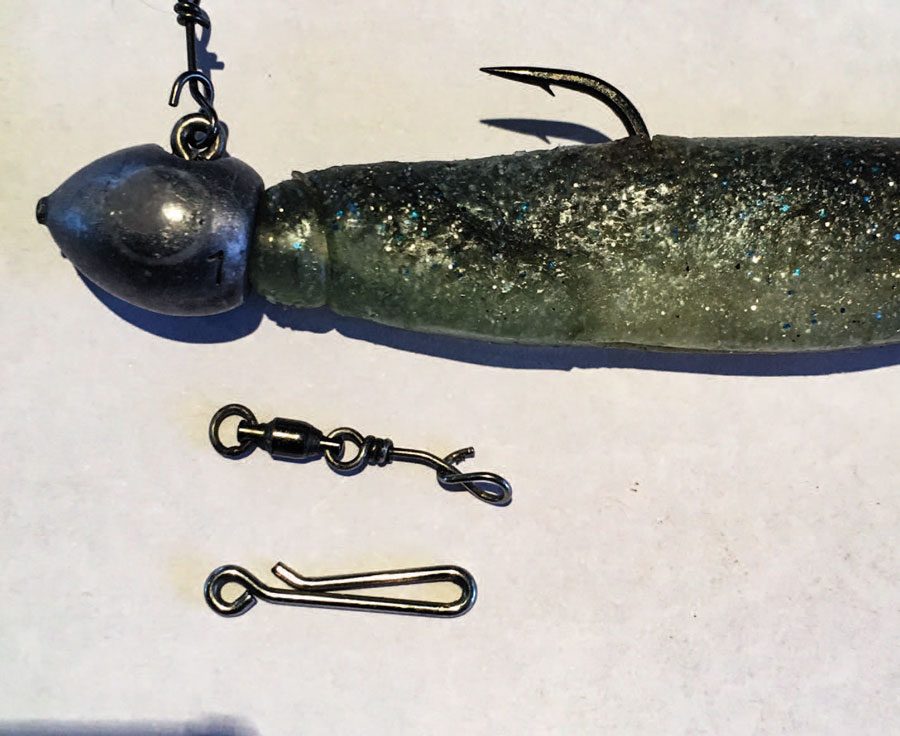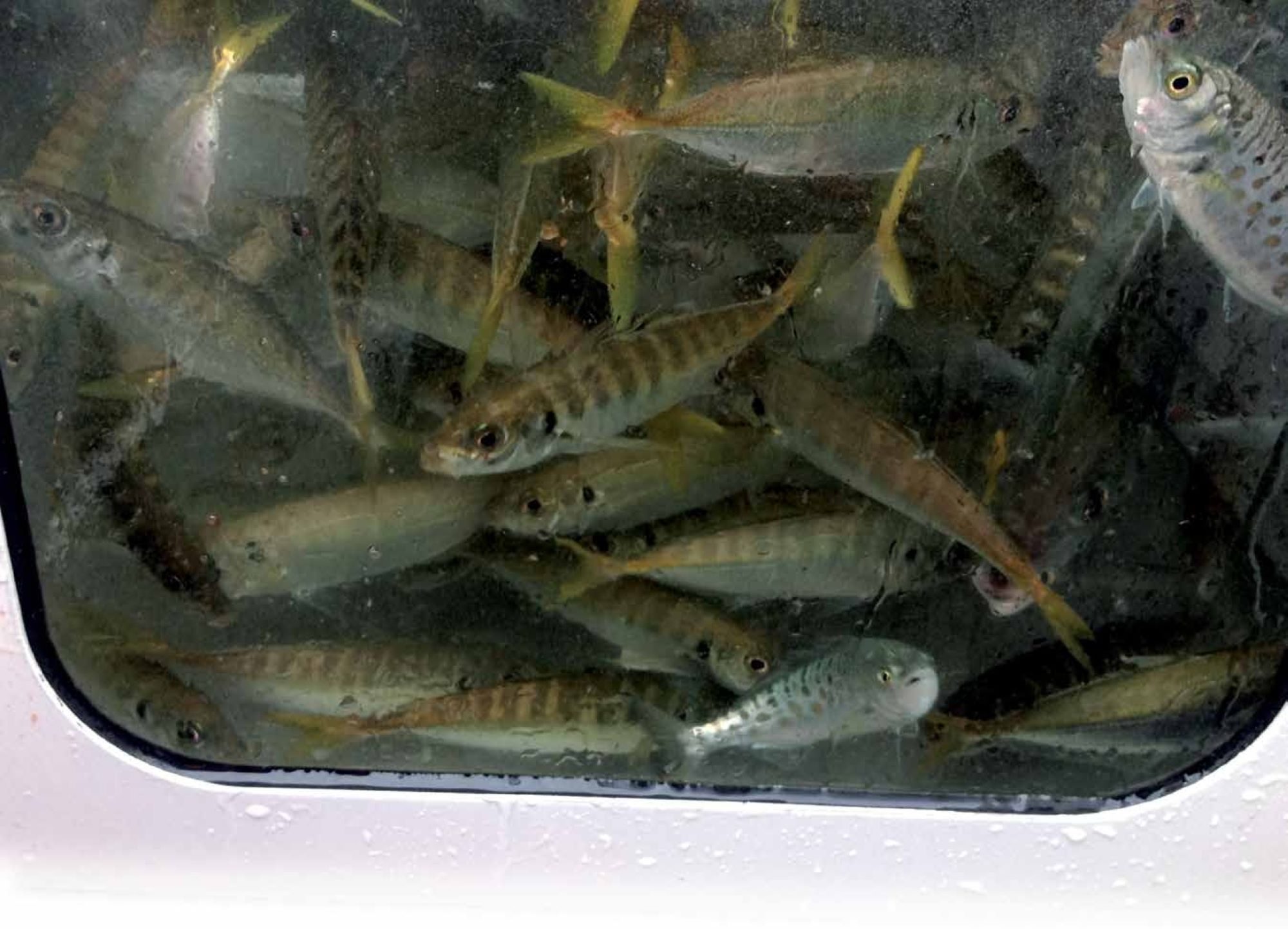

My advancing years and a long-time passion for soft-plastic fishing probably qualify me as a ‘veteran’, but the challenge of bringing soft-baits to life continues to intrigue me. Mastering the subtleties is a never-ending process, but I have learned quite a bit along the way.
INHERENT OR IMPARTED ACTION?
One only has to walk into a decent fishing shop to see a huge array of soft-plastics of every colour, shape and size. But in terms of their ability to produce lifelike movements there are really just two categories Kiwi saltwater anglers need consider: those with inherent/inbuilt actions (i.e. shaped to produce movement as the lure moves through the water) and those where the angler manipulates the lure to impart the desired motions.
The paddle-tail and curly/grub-tail families are the most popular with inbuilt actions, while the most commonly used soft plastic, the ‘jerk’ bait, is the star in the imparted action camp.

PADDLE-TAILED SOFT-BAITS
There are some definite advantages in using paddle-tails. For a start, the quicker the water flows over them, the faster the paddle tail wriggles from side to side, and the more water disturbance it creates. Most predators have lateral lines capable of picking up vibrations, which helps them to locate prey (including lures) and home in for a closer inspection. This sense is especially important when their vision is impaired, perhaps by poor water clarity (turbidity) or low light.
The jig-head weight used with a paddle-tail plays an important role in the speed and intensity of tail movements. Use a jig that’s too light and a slow tail roll is as much as you’ll get, whereas heavier jig weights produce a veritable blur of tail motion.
The soft bait material should be considered too: some products are definitely more supple than others, requiring less weight to produce a decent tail thrash. When jig-heads of ½-oz and heavier are used with 4- or 5-inch (10-13cm) soft-baits, using supple baits is an advantage.
They also provide benefits at the other end of the weight spectrum: we’ve had snapper and kingfish intercept large Z-Man SwimmerZ attached to 6-oz and 8-oz Berkley Elevators or Ocean Angler Cyclops streaking their way towards the bottom in 40 to 55m of water!
The paddle-tail lure’s natural action means it suits lift-anddrop or yo-yo type motions, which often work best in deeper water (i.e. around 30-60m, where the boat overhead is less likely to disturb the fish).
I usually incorporate a reasonably languid mechanical-jigging action (one turn of the reel handle while simultaneously lifting and dropping the rod) when working the lure up off the bottom towards the surface. This can be anything from a two- or threemetre ascent through to retrieving the soft plastic through a quarter or third of the water column, before dropping back to the seafloor again.
Paddle-tails are also useful for targeting surface-feeding predators. Heavier jig-heads allow longer casts and quickly sink the lure to the desired depth before you begin the retrieve, the paddle tail thrashing all the while.
Similarly, paddle-tails suit low speed trolling duties, but keep the rod tip down and ‘pulse’ it so the lure’s progress through the water is more erratic. The extra swimming interest results in more strikes.

CURLY-/GRUB-TAILED SOFT-BAITS
As this tail type is typically half the lure’s overall length and very thin, it provides plenty of action from very little movement or current flow. That means grubs are an excellent option for anglers wanting maximum lure movement, whether on the lure’s descent or while dragging and/or jiggling it along the seafloor.
Curly-tails work with any jig-head weight, but ⅜- or ½-oz jigheads are best when snapper are feeding aggressively in 6-20m of water since bites often come as the lure is dropping.
When fishing on the bottom, up the weight as necessary to compensate for extra depth, current and drift speed (⅝-1oz is typical in 20-50m of water). Drag the lure along the seafloor using small rod twitches and the occasional jiggle to entice fish into biting.
Both these techniques work very well around musseldredging operations, with 4-inch (10cm) grubs in brown or orange especially popular.
Again, a soft-bait’s composition can make a difference, not only to its tail mobility, but also its durability, since those made from less robust material are quickly destroyed.
JERK SHAD SOFT-BAITS
Jerk-shad baits with their long, slim forms might not look that interesting, but manipulate them effectively and you’ll get plenty of bites. While most have little or no action built in, some of the latest are supple enough to produce some tail-waggling action when rigged correctly.
At this point, might I suggest avoiding jig-heads armed with overly long-shanked hooks? To me it makes little sense to insert a rigid metal rod into something that’s flexible by nature and designed to allow plenty of movement. Larger snapper have mouths big enough to engulf much of the lure and tend to bite lures in the mid-body to head region anyway, not the tail.
That’s why I enjoy using 7-inch (18cm) jerk-shads, since their extra length results in a seductive tail weave on descent and retrieval. Some soft-bait brands are buoyant enough to lift their tails when they reach the bottom. Wafting around enticingly, 7-inch models are like a signpost calling predators over to investigate.
For me, imparting extra movement starts during the descent, especially in water over 15m deep. I point the rod downwards along the line floating on the water’s surface. Whenever it looks too bowed, or I’m unsure of the lure’s location – or I suspect I might be getting a bite – I wind in some line to make contact with the lure again. If the line comes up tight, it’s a biting fish – time to firmly set the hook!

In addition to hooking fish that might otherwise go undetected, winding in line maintains good contact and imparts a bit of extra movement to the lure during the descent, resulting in more bites.
Upon reaching the bottom, try to imitate the motions of a badly injured or dying baitfish. This is where the soft plastic jerkbait’s comparatively stick-like form comes in handy. First work it upwards in jiggling ‘spasms’, before letting it waft back down in free-fall with minimal body movement. It is behaving just like a wounded bait fish.
When fishing this way, keep an eye on the rod tip to ensure you’re not over-working the soft-bait – you want realistic movements that don’t rip the lure away from hungry fish, especially in murky water. That’s is easy to do with longer softbait rods.
The next phase is to drag it behind the boat for a while. Sometimes snapper like the jerk-bait wafting and darting while sinking through the water; at other times they are stimulated by subtle jiggles and jerks. But when neither of those tactics are working, dragging the jerk-shad behind the drifting boat sometimes does the trick.
Leave the lure to largely do its own thing, helped along by the odd rod twitch and jiggle, and drop the lure back or wind it in a bit occasionally. Any variation in the trundling lure’s progress over the seafloor can result in crunching bites, so be prepared. BNZ

CLIP VERSUS LOOP KNOT?
Soft-baits move best when they’re not knotted tightly to the trace with a Uni or Clinch knot.
A Lefty’s Loop or Rapala Loop knot will help achieve good lure movement, as will a Mustad Fastach or Genii Clip. While neither loop knots nor clips are perfect – Loop knots wear out over time and clips can fail – overall they help the lure attract more bites. Clips also allow quick, easy jig head changes without shortening the leader each time.





